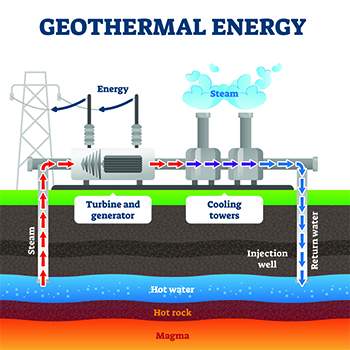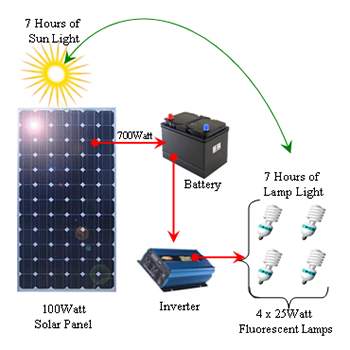There are a plethora of practical pros of boosting power energy efficiency on your homestead. Not only does it help reduce your utility bills by cutting back on your energy consumption, but it’s also the perfect way to reduce your carbon footprint.
Researching Local Green Energy Regulations and Incentives
Before you start homesteading, there are several key factors to remember. First and foremost, keep in mind that rules and regulations about renewable energy systems like solar panels and wind turbines may vary from state to state. In case your city or state restricts either of those, you must find that out during the early stages of your project.
To figure this out, you may contact your local city hall or connect with a local solar and wind installer to find out what energy systems you can install.
In addition to this, there may be certain tax credits and incentives that help make purchasing a green energy system budget-friendly. The federal Residential Renewable Energy Task Credit is applicable for systems, such as solar panels, geothermal heat pumps, and wind turbines. You should tally the state laws to determine if they offer additional tax credits on renewable power consumption. Plus, your local utilities may provide you with programs to make the renewable power installation more straightforward.
A lot of people dream about living a homesteader lifestyle. Here’s how you can breathe life into that dream.
Living Off-Grid
One crucial factor that homesteaders often overlook is inefficient energy systems. Therefore, homesteaders should consider investing in sustainable energy to lower expenses and your reliance on energy companies. You can use sustainable and alternate energy sources such as solar energy, micro-hydro, windmill, and biofuels to generate electricity. The energy source you decide on is based on the regional climate. For instance, if you reside in a state with colder weather lacking adequate sunlight, solar panels won’t perform very well.
Portable solar generators are ideal for offering emergency access to electricity. They come in various sizes and can produce up to hundreds of watts of energy. You can even generate hydroelectricity using water resources such as rivers or streams to drive water turbines. However, access to running water is often sparse, and thus, it’s expensive and ineffective in many cases.
Add a New Insulation
A poor insulation job on your home can result in you losing valuable money on air and heat conditioning. According to in-depth research, more than 98 million in the US lack appropriate insulation and, in turn, are losing about 1/5th of the generated heat.
An excellent way to eradicate energy wastage is by adding new, more revolutionary insulations to your property’s walls and openings like windows and doors. The most popular options are loose, spray, and blanket foam.
Invest in Windows
It’s always beneficial to invest in energy-efficient windows. These typically boast a low-E coating that ensures light enters your rooms without heat.
During winter times, low-E coated windows ensure warmth from inside your home doesn’t escape outside. When you’re making your purchase, be on the lookout for windows offering limited air leakage. In this way, less amount of air will escape.
In addition to this, remember to purchase windows with low-U factors, i.e., the rate of non-solar flow of heat entering your homes. These fine-quality windows are the perfect way to save money.
Top 5 Ways To Power Your Homestead
1. Wind Turbines
There’s no need to install a vast and robust wind turbine similar to the one on farms. In fact, propellers as small as a trashcan expedite your savings on utility bills as long as you install them the right way.
Professional installation in the optimum space is critical here since it helps ensure safety and top-notch performance.
The cost of wind energy for residential purposes varies, depending on the energy consumption and electricity production. Typically, it costs $4,000-$8.000 per kilowatt. For a residential home that consumes 10,000 kW/year, the wind turbine setup will cost $50,000.
2. Biomass
Biomass is a renewable and sustainable source of energy coming from organic materials like animals and plants. Also, biomass power is the perfect way to create electricity. It is generated from renewable organic waste that’s typically found in dumps in landfills, left as fodder for forest fire, and so on.
3. Geothermal Energy
Another renewable energy form is thermal, drawn from the cracks of the Earth’s crust. Nevertheless, the process is complicated and requires professional geologist services to ensure feasibility and installation.
Geothermal is a popular and ancient way of creating energy. For instance, heat from the Earth’s core was utilized thousands of years ago to provide different energy kinds.
Hot springs and hot pools used for bathing and health treatment, cooking, and heating also rely on geothermal resources.
The cost of geothermal plants depends on the drilling and construction work. Next comes the design of the power plant and its installation. The initial cost is $2500 per kilowatt, whereas the operational and maintenance charges vary between $0.01 -$0.03 per kWh.
4. Solar Energy 
A residential 5kW costs around $3-$5 per watt, including the purchase and installation of solar panels, resulting in $15,000-20,000 per system. However, to set up a solar energy system, you need to consider various factors such as the amount of sunlight exposure, your homestead orientation towards the sun, and roof type.
To calculate your total expenses, measure your daily energy consumption and the amount of electricity the solar panels generate. However, the government offers multiple incentives for using alternative energy sources. Moreover, you can also benefit from long-term benefits such as no electricity bills, minimal maintenance, and tax exemption.
5. Hydroelectricity 
The energy produced through hydro depends on the volume of water and its vertical distance from the turbine. Meanwhile, the equipment cost is around $1,000 for the small systems while $3000 for larger ones can power a modern home.
The Best Way to Power a Homestead
The right source of energy for your homestead depends upon the access and availability of natural resources. For instance, southern US states such as California have higher sunlight exposure and thus suitable for generating solar energy.
However, you can use various energy production methods to ensure consistent electricity throughout the year. For instance, the sun is low in winter, but you have access to a more significant amount of wind and can generate wind-powered electricity. In rainy seasons, you can collect water and develop an artificial source of running water to produce hydroelectricity.
Final Words
Here’s the thing; homesteading is a challenging task. You might make a couple of mistakes here and there. However, you’ll learn an array of skills as well. So you must remain patient and keep dreaming of a beautiful future.
One incredible way to motivate yourself is to set realistic goals and noticing your results. Determine the effects and benefits of homesteading, short-term and long-term. If you’re a novice stepping into the world of homesteading, set smaller goals. Once you adapt to your plan, move onto a new one.
If things start to get overwhelming, remind yourself why you choose to homestead, why you choose this challenging yet rewarding journey, and why it’s worth it.
You may also like:
Do You Know Why You Should Never Put A Tall Fence Around Your House? (Video)
25 Powerless Appliances for Your Homestead Kitchen
How to Prepare Your Homestead In Case Of a Natural Disaster
The Best Vegetables To Grow To Turn A Profit













